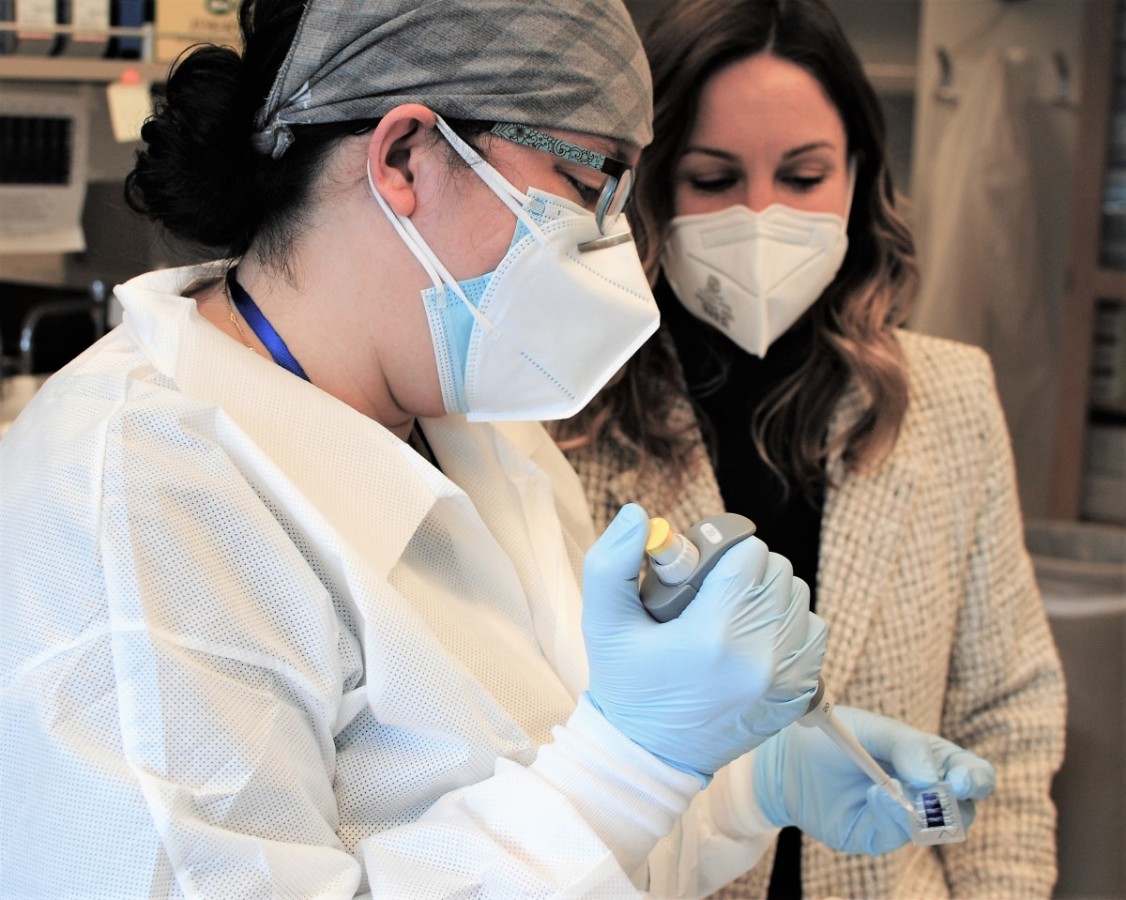 The rhesus macaque shares 93 percent of its DNA sequence with humans, according to Dr. Noah Snyder-Mackler. (Photo courtesy Dr. Snyder-Mackler)
The rhesus macaque shares 93 percent of its DNA sequence with humans, according to Dr. Noah Snyder-Mackler. (Photo courtesy Dr. Snyder-Mackler)
“The cellular and molecular origins of complex human thought and behavior remain largely a mystery.”
Most articles in peer-reviewed journals do not begin with such a philosophical statement. But then other papers do not summarize the creation of a molecular atlas across the brain, “a critical and much-needed molecular and neurobiological map of complex human-relevant social behavior and disease, as well as an extensive substrate for comparative analyses across animal brains.”
The paper’s authors “generated a 4.2 million cell (combined) transcriptomic and epigenomic atlas across the brain of the rhesus macaque, the most widely used nonhuman primate model organism for studies of human perception, cognition, aging, and neurological disease…. To our knowledge, these data represent the largest and most comprehensive multimodal molecular atlas in a primate to date and provide a resource for exploring how the heterogeneous molecular and cellular composition of the brain gives rise to the behavioral complexity of primates including humans.”
Why the rhesus monkey?
“This primate shares 93 percent of its DNA sequence with humans,” said one of the three corresponding authors, Dr. Noah Snyder-Mackler, an assistant professor at ASU’s Center for Evolution and Medicine. “We used brain tissues from a biobank to identify cell types at a fine resolution and quantify their distribution across the brain to inform our understanding of genes, behavior, and neurobiology.”
The paper, “A single-cell multi-omic atlas spanning the adult rhesus macaque brain,” also notes that “serotonergic neurons were most abundant in the brainstem, where they play a major role in sleep, mood, and appetite, and are key targets of pharmacological therapies for major depressive disorder in humans.”
Snyder-Mackler joined forces with Dr. Jay Shendure, scientific director of the Brotman Baty Institute, and Dr. Michael Platt of the University of Pennsylvania, to secure a $1.6 million grant in 2017 for the project, part of the National Institutes of Health’s Brain Research Through Advancing Innovative Neurotechnologies (BRAIN) Initiative.
BBI’s contribution to the study is the single-cell sequencing of those tissues. “We would not be able to do this without BBI,” said Snyder-Mackler, who served in the University of Washington’s Department of Psychology from 2017 until he moved to ASU in 2020. “Its work is instrumental, and we have a fantastic collaboration.”
For BBI, the study “is certainly one of the largest single-cell sequencing projects we have been involved in,” said the Institute’s Director of Single Cell Genomics Dr. Mary O’Neill. “There are already over four million transcriptomes or epigenomes near publication, and we continue to generate more data toward the aims of the project as part of our ongoing collaboration.”
BBI uses single-cell combinatorial indexing (sci-based) molecular profiling methods which enables “exponentially large numbers of nuclei to be profiled.,” she said. “This scalability, combined with a low cost-per-cell, makes sci-based methods particularly well-suited for large-scale, atlas-style studies, such as this BRAIN Initiative project.”
O’Neill works closely with Diana O’Day, the BBI research scientist to whom Snyder-Mackler and his ASU colleagues send samples of the primates’ brain tissue and nuclei for sequencing. Those samples, O’Day said can be miniscule.
How small is “miniscule?”
“They range from 13 milligrams, about the size of a grain of rice, to upward of 300 milligrams,” she said. “The sample preparation and subsequent sequencing process can take between two to six weeks. We then return the data back to Dr. Snyder-Mackler’s lab for further analysis.”
 BBI Research Scientist Diana O'Day (left) prepares a tissue sample for quality review as the Institute’s Director of Single Cell Genomics Dr. Mary O’Neill looks on.
BBI Research Scientist Diana O'Day (left) prepares a tissue sample for quality review as the Institute’s Director of Single Cell Genomics Dr. Mary O’Neill looks on.
O’Neill calls single-cell sequencing “a powerful tool that allows researchers to characterize molecular profiles of individual cells,” and that its “technological advances have really transformed the way and the scale at which researchers can probe cellular function and diversity.”
The power and potential of the atlas, which Snyder-Mackler said is expected to be available online sometime this month, exemplifies the BRAIN Initiative, which, according to the NIH website:
“By accelerating the development and application of innovative technologies, researchers will be able to produce a revolutionary new dynamic picture of the brain that, for the first time, shows how individual cells and complex neural circuits interact in both time and space. (This work) will fill major gaps in our current knowledge and provide unprecedented opportunities for exploring exactly how the brain enables the human body to record, process, utilize, store, and retrieve vast quantities of information, all at the speed of thought.”
[NOTE: Anyone interested BBI’s single-cell sequencing platform and related services, may explore its website and/or contact BBI at scibats@u.washington.edu]

